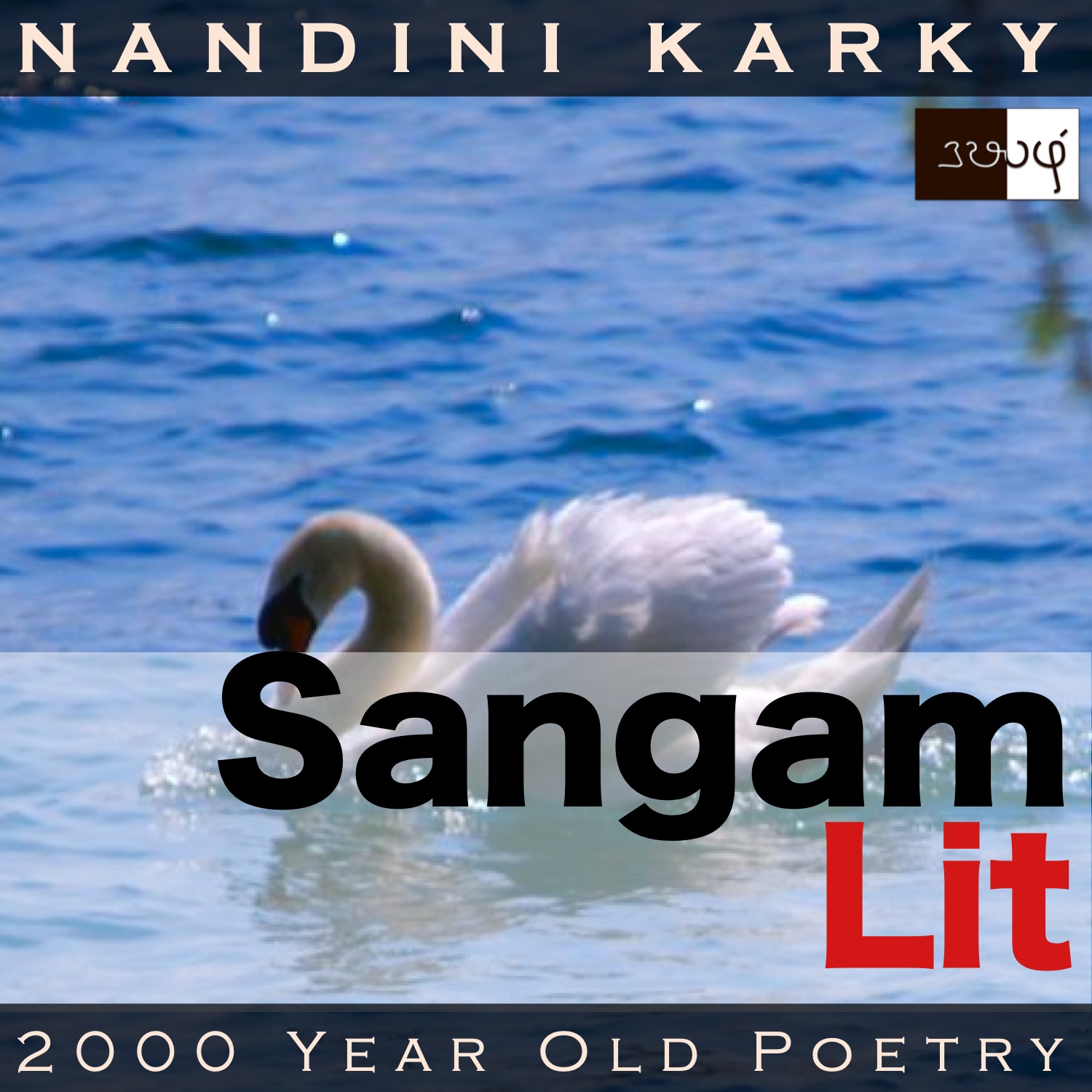Podcast: Play in new window | Download
Subscribe: Apple Podcasts | Spotify | Amazon Music | Android | iHeartRadio | Email | TuneIn | RSS | More

In this episode, we relish a picturesque comparison, as portrayed in Sangam Literary work, Kurunthogai 205, penned by Ulochanaar. Set in the coastal regions of ‘Neythal’, the verse speaks in the voice of the lady to the confidante, in response to the confidante’s words of concern as to how the lady would bear with the man’s parting.
மின்னுச் செய் கருவிய பெயல் மழை தூங்க
விசும்பு ஆடு அன்னம் பறை நிவந்தாங்கு,
பொலம்படைப் பொலிந்த வெண் தேர் ஏறி,
கலங்கு கடற் துவலை ஆழி நனைப்ப,
இனிச் சென்றனனே, இடு மணற் சேர்ப்பன்;
யாங்கு அறிந்தன்றுகொல்-தோழி!-என்
தேம் கமழ் திரு நுதல் ஊர்தரும் பசப்பே?
‘How could it know’ is the surprised question in this one! The opening words ‘மின்னுச் செய் கருவிய பெயல் மழை’ meaning ‘a cloud that causes flashing and appears in company’ is a quaint description of the cumulonimbus clouds. In ‘விசும்பு ஆடு அன்னம்’, we take in the scenic image of ‘a swan flying to the skies’. From this element of nature, the focus shifts to an ancient vehicle in ‘வெண் தேர்’ meaning ‘white chariot’. The hero of the verse says hello in ‘இடு மணற் சேர்ப்பன்’ meaning ‘lord of the shores, where the waves heap sands’. ‘யாங்கு அறிந்தன்றுகொல்’ meaning ‘how come it knows’ echoes the core question mentioned before. Ending with the words ‘ஊர்தரும் பசப்பே’ meaning ‘pallor that spreads’, the verse welcomes us to listen with empathy.
Pallor is here, signifying pining and parting, an oft-occurring situation in Sangam times. The context reveals that the man and lady were leading a love relationship when the man parted away to gather wealth for their wedding. The confidante turns to the lady concerned and to her friend, the lady says, “As a raincloud that makes lightning flash and appears accompanied, pours down, a swan soars high. Akin to that, climbing on to the white chariot decked with gold plates, as spraying droplets of the sea soak the wheels, he departed now, the lord of the sand-filled shores. How did it come to know of this, my friend? For, on my fragrant, fine forehead, pallor has already spread!” With these words, the lady conveys her shock at the speed with which pallor attacks her and wonders about how she would bear with the long separation ahead.
Time to explore the nuances. The lady starts, not by talking about her or the man. Instead, she talks about a dark cloud, zooming into vision and streaking the skies with lightning. Another essential aspect of these clouds, the lady mentions when she says that these clouds never come alone. Sure enough, a rain cloud comes into the picture holding hands with winds, moisture, coolness and thunder. From these changes in the weather, the lady turns to talk about its effect on a swan that was lazing about in the waters. Immediately, the swan flutters and moves high towards the skies. It’s now she comes to the point and says that’s how the man left on his white chariot, as the ocean sprayed water drops and drenched his chariot wheels now. Then, she continues and asks her friend in a puzzled manner ‘How did it know?’. As we wonder about what that pronoun refers to, the lady clarifies by concluding that she’s talking about ‘pallor’ and the way it has started spreading on her forehead.
In the above description, the aspect we have to fly towards is the word ‘now’. The man has left just now, from the scene, after expressing his intention to part in search of wealth for their wedding. But already, as if someone had sent word to pallor, here it was, knocking on the lady’s forehead and spreading across instantaneously! Yet again, I’m awed by the immediate physical effects of emotional changes in Sangam times. Perhaps, in today’s world, we have become so skilled in hiding our emotions that it takes quite a while for these to appear on the outside. But back then, it seems to have been immediate. A testimony to how connected the Sangam people were to their inner world!




Share your thoughts...